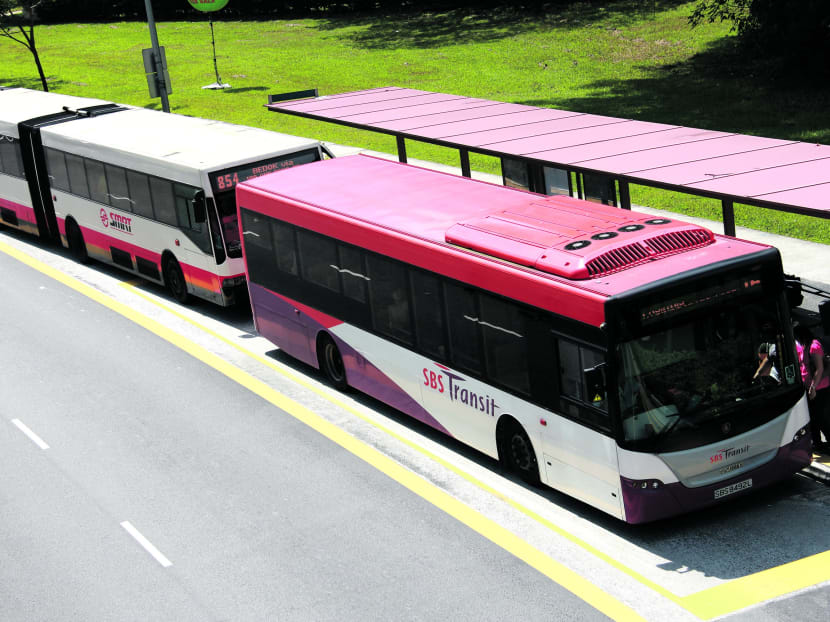Regular fare increases necessary to ensure financial sustainability of public transport system: Lui
SINGAPORE — Regular fare increases will be needed and new routes could be cancelled if there are insufficient passengers after some months, in order to make sure that the new bus contracting model is sustainable.
SINGAPORE — Regular fare increases will be needed and new routes could be cancelled if there are insufficient passengers after some months, in order to make sure that the new bus contracting model is sustainable.
Transport Minister Lui Tuck Yew made these points today (July 7) in Parliament, in response to concerns raised by several Members of Parliament (MPs) on the financial sustainability of the system — which will be implemented from the second half of 2016 — and how much taxpayers’ money will be needed to run it.
He also revealed that the Land Transport Authority (LTA) is working on a framework to assess the passenger threshold a new route ought to meet before it can be operated.
Mr Lui said: “The eventual amount of subsidy will crucially depend on whether fares and bus service standards are set realistically. Regardless of industry model, the cost of the overall bus system has to be paid for either by commuters in the form of fares, or taxpayers in the form of Government subsidies.”
He added: “There is surely no free lunch... The Government is committed to ensure the affordability of public transport fares. However, regular fare adjustments are still necessary to ensure the overall financial sustainability of the public transport system.”
The radical overhaul of the bus industry was announced in May. Under the new model, the Government will take over all bus operating assets and infrastructure, and contract out the bus services. Industry observers were hopeful that this could prompt operators to ply services along non-profitable routes as these could be packaged together with profitable ones.
But Mr Lui stressed that new routes and higher service standards have to be “assessed judiciously”. “If you operate more and more new routes and the ridership is low, the Government, and indirectly the taxpayer, takes on the burden of making sure it is financially sustainable,” he said.
He added that a new route could be tested for some months and if it does not cross the passenger threshold, the authorities may have to “sometimes make the painful decision to cut that route and eliminate it”.
He said: “Even today, we receive many requests to run bus routes that have low ridership. From the point of view of the select few who benefit, these bus routes are of course ‘necessary’. But if we run too many of these routes throughout the system, then either higher fares, or more Government subsidies, will be required.”
Mr Lui declined to reveal the Government’s budget to operate the system and how much it is prepared to subsidise the routes at this juncture, noting that doing so may skew the bids.
Nevertheless, he said the LTA will have to spend about S$150 million to S$200 million to buy about 400 buses for each package of routes. This translates to about S$1.8 billion to S$2.4 billion to pay for buses for the 12 packages in all that will be contracted out under the model.
Responding to Nominated MP R Dhinakaran’s question on whether the subsidies will be made known for a particular route before the tender is put up, Mr Lui said it is unclear right now whether all packages will require subsidies, or how much these are going to be.
He said that operators will most likely bid on the cost of running a bus on a per kilometre basis, and the Government may contract them to run, say, a million kilometres. If fare revenues collected by the Government do not match what it pays the operators, or if fares do not go up enough even as costs rise, then there will be a need for taxpayers’ money to subsidise the system, he said.
Mr Lui noted that the rise in operating cost in the past had well exceeded the fare increases introduced each year. From 2005 until 2012, the annual fare increase averaged 0.3 per cent. Increases in wages and fuel costs were much higher than this, he pointed out.
Non-Constituency MP Gerald Giam asked how the Government intends to ensure genuine contestability and make it is easier for new players to enter the market. In response, Mr Lui noted that with LTA buying and owning the buses, the barriers to entry will be lower for new players, including existing local companies which have been running private buses quite efficiently.
Senior Minister of State (Transport and Finance) Josephine Teo noted that the bus contracting system is among the range of possible public-private partnership (PPP) models that can be adopted for public services, in response to NMP Teo Siong Seng’s question on whether such a partnership is the way forward for Government outsourcing projects. Mrs Teo pointed out that PPP models have already been adopted in areas such as healthcare, nursing homes and water management.







